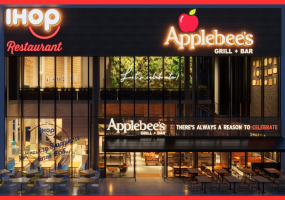
Restaurateurs, including chefs, can save a lot of energy in their restaurants by simply reducing the energy consumption of their kitchen appliances. To do this, they need to know which appliances are the highest energy consumers.
There is no doubt about it that the restaurant industry is a major contributor to greenhouse gas emissions. Hospitality industries would do well to switch energy suppliers for business gas and electricity as the best approach to cut restaurant costs.
To save energy and money, restaurants should look into their highest energy-consuming appliances. This includes refrigerators, ovens, dishwashers, water heaters, microwaves, and freezers.
What are Some of the Highest Energy Consumption Appliances?
The highest energy consumption appliance in a restaurant is the oven. It can range from 1,000 to 2,500 watts depending on the type of oven. The second highest energy consumption appliance is a dishwasher, which ranges from 500 to 1,000 watts. The third highest energy consumption appliance is the refrigerator which ranges from 400 to 800 watts.
So is a deep fryer which ranges from 700 to 1,400 watts. Finally, an oven with an open flame or gas burner, the highest energy intake of electricity, is around 6,000 watts.
Major Appliances That Cause the Highest Energy Costs in Restaurants
Energy costs are a major issue in the restaurant industry. The high energy cost is why many restaurants have to shut down.
The major appliances that cause the highest energy costs in restaurants in the UK are ovens and freezers. These two appliances consume a lot of electricity and gas, which is why they are expensive to operate.
To reduce these high costs, use microwaves instead of ovens when possible. Freezers can be replaced with refrigerators or left out entirely, as they don't make food any colder than refrigerators.
Following the money-saving tips presented throughout will help you cut down on the amount of energy your restaurant uses.
How to Be Wise Regarding the Energy Efficiency of Your Restaurant
Most appliances used in restaurant kitchens consume a lot of electricity. Consider the potential cost of operating an electric deep fat fryer, which typically consumes more than 11,000-kilowatt hours (kWh) of electricity per year.
1. Put money into ENERGY STAR-certified kitchen appliances.
It is important to consider the full cost of ownership of new machinery, including the initial investment, the yearly energy bills, and any other ongoing expenses. While high-efficiency appliances may be more expensive to purchase initially, they can save money in the long run by reducing energy use. Ask your dealer or kitchen designer to provide you with ENERGY STAR-certified appliances.
2. Reduce inactivity
Money is wasted if machines are left on when they are not being used. It is important to have a startup/shutdown procedure in place to guarantee that you are only running necessary machinery at the right times. Keep these in good repair and condition.
Money is lost every month due to "energy leaks," such as broken walk-in refrigerator gaskets, open freezer doors, and missing knobs on cooking appliances. Avoid increasing your energy costs by paying attention to regular wear and tear.
3. Think before you throw something in the oven
Ovens are typically more productive than rotisseries, and stovetop griddle tops generally are more effective than over-the-range broilers. To reduce your restaurant's carbon footprint, review your menu and cooking practices to see where you may make more efficient use of your appliances.
You need to re-adjust your settings to maintain your effectiveness. Equipment in your kitchen degrades in efficiency over time. Both thermostats and control systems are susceptible to malfunction, miscalibration, and manual resetting.
If you want to keep your refrigerator, dishwasher, and water heater running efficiently, you should regularly check their thermostat settings and adjust them as needed.
To Wrap Up
There are many ways that a restaurant can reduce its electricity usage. This includes a few simple tips like turning off the lights when leaving the room, using less water and turning off the air conditioning when it's not needed.
Moreover, the food chain includes agriculture, manufacturing, distribution, retail, and consumption. In the UK, 300,000 businesses employ 3.3 million people and spend £188 billion. The food chain generates 18% of UK energy.
The energy consumption and emissions from the food chain vary between sources, mostly due to assumptions. However, reducing energy and resource use in the food sector is crucial for profitability, food security, and reaching the government's greenhouse gas emissions reduction targets.
* This is a contributed article and this content does not necessarily represent the views of foodworldnews.com









